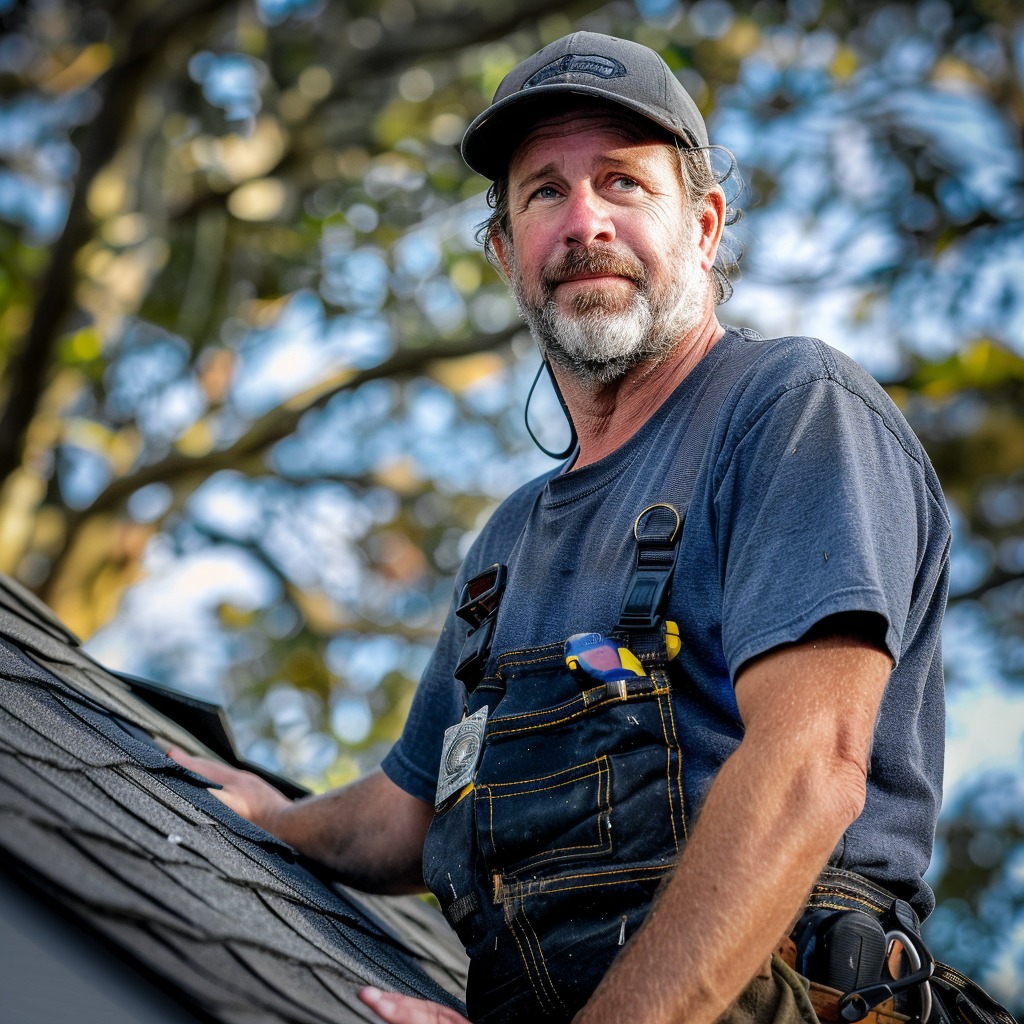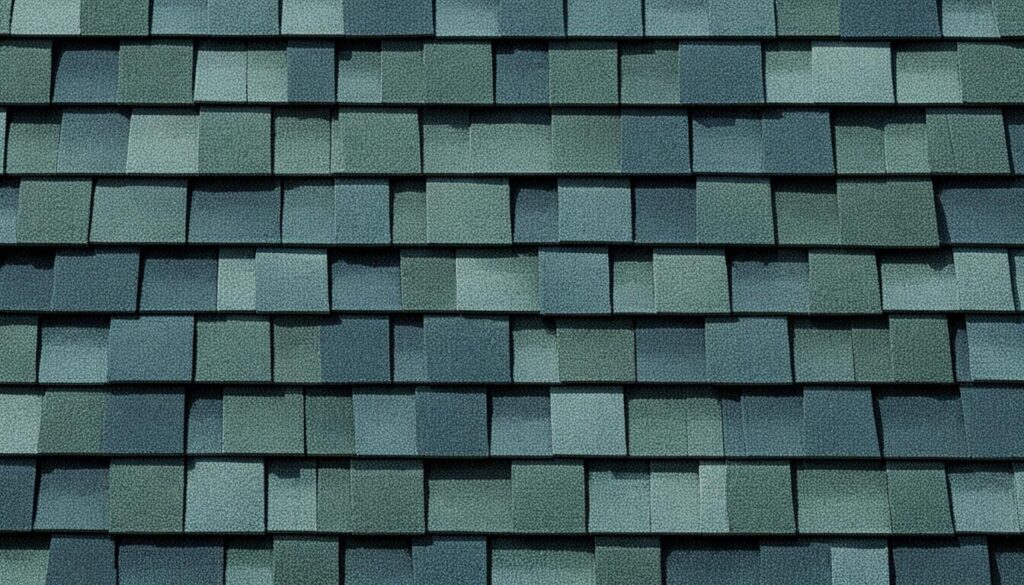When it comes to replacing your roof, a common question homeowners have is: how long do architectural shingles last? Are they truly as durable and long-lasting as they claim? If you’re curious to know the lifespan of architectural shingles and what factors can affect their durability, you’ve come to the right place.
Key Takeaways:
- Architectural shingles have a manufacturer-specified lifespan of 30 years, but their realistic lifespan is around 22-25 years.
- The quality of installation, adequate attic ventilation, exposure to weather conditions, roof orientation, and maintenance all play a role in determining the lifespan of architectural shingles.
- If your shingles are uneven, wavy, sliding off the roof, or if you’re experiencing leaks, it may be time to replace them.
- Comparing architectural shingles with other roofing materials, such as metal roofs, wood shingles, clay tile roofs, and slate tile roofs, can help you make an informed decision about your roof’s longevity.
- Proper installation and regular maintenance are crucial for maximizing the lifespan of architectural shingles and ensuring a long-lasting roof.
Factors Affecting the Lifespan of Architectural Shingles
Several factors can impact the lifespan of architectural shingles. The quality of installation plays a crucial role in their longevity. Properly installed shingles and adequate attic ventilation are essential for the shingles to reach their maximum lifespan. The weather conditions the shingles are exposed to, such as extreme heat, storms, and hurricanes, can also affect their durability. Regular maintenance, including inspections and repairs, is important to ensure that the shingles last as long as possible. It is recommended to hire a professional roofing contractor with experience in installing architectural shingles and to follow their maintenance guidelines.
Quality of Installation
The quality of installation is a key factor in determining the lifespan of architectural shingles. Improper installation can lead to premature failure and reduce the overall durability of the shingles. It is important to hire a reputable roofing contractor who has experience in installing architectural shingles to ensure that the installation is done correctly.
Attic Ventilation
Adequate attic ventilation is crucial for the longevity of architectural shingles. Proper ventilation helps to regulate the temperature and moisture levels in the attic, preventing excessive heat buildup and moisture damage. Without proper ventilation, heat and moisture can become trapped in the attic, leading to accelerated shingle deterioration.
Weather Exposure
The weather conditions to which architectural shingles are exposed can significantly impact their lifespan. Extreme heat, strong winds, heavy rain, snow, and ice can all take a toll on the shingles over time. Shingles that are regularly subjected to harsh weather conditions may experience more wear and tear, leading to a shorter lifespan.
Maintenance
Regular maintenance is essential for the long-term performance of architectural shingles. This includes periodic inspections to identify any signs of damage or wear, as well as prompt repairs when necessary. Cleaning the roof regularly and removing debris can also help prevent moisture buildup and damage to the shingles.
A well-maintained roof with proper installation, adequate ventilation, and regular maintenance can significantly extend the lifespan of architectural shingles, allowing homeowners to enjoy their durability and protection for years to come.
Signs that It’s Time to Replace Your Architectural Shingles
If you’re unsure whether it’s time to replace your architectural shingles, there are specific signs you should look out for. Identifying these signs early can help prevent further damage to your roof and save you from costly repairs. Here are the three main indicators that you need to replace your architectural shingles:
Premature Roof Failure
One of the signs that it’s time to replace your architectural shingles is premature roof failure. This can happen due to improper installation or inadequate attic ventilation. If you notice that your shingles are uneven, wavy, or sliding off the roof, it’s likely that they have failed prematurely. Additionally, if you experience leaks or water stains on your ceilings, it could be a clear indication of shingle failure.
Storm Damage
Another sign that you need to replace your architectural shingles is storm damage. Severe weather conditions, such as strong winds, heavy rain, or hailstorms, can cause significant damage to your shingles. Look for missing, lifted, or creased shingles after a storm. Additionally, check for any tree damage, hail dents, or damage to roof flashing and vents. If you observe any of these signs, it’s essential to address the issue promptly to prevent further roof damage.
Age of Your Shingles
The age of your shingles is an important factor to consider when determining whether it’s time for a replacement. While architectural shingles typically last around 25 years, they do deteriorate over time. If your shingles are approaching or have surpassed the 20-year mark, it’s a good indication that they need to be replaced soon. An aging roof can become more susceptible to leaks and other issues, so it’s crucial to have a professional inspection and assess the condition of your shingles.
By recognizing these signs, you can take proactive steps to replace your architectural shingles before they cause further damage to your home. Whether it’s premature roof failure, storm damage, or the age of your shingles, addressing these issues promptly will help ensure the longevity and structural integrity of your roof.
| Signs it’s Time to Replace Your Architectural Shingles | Description |
|---|---|
| Premature Roof Failure | Uneven, wavy or sliding shingles, leaks, water stains |
| Storm Damage | Missing, lifted, or creased shingles, tree damage, hail dents, damage to roof flashing and vents |
| Age of Your Shingles | Approaching or surpassing the 20-year mark |
Comparing Architectural Shingles with Other Roofing Materials
When it comes to choosing the right roofing material, it’s essential to consider the lifespan and cost of various options. While architectural shingles are a popular choice for their durability and affordability, it’s important to compare them with other roofing materials to make an informed decision.
Comparative Lifespan of Roofing Materials
Here is a comparison of the lifespan of different roofing materials:
| Roofing Material | Lifespan |
|---|---|
| Architectural Shingles | 22-25 years |
| Metal Roofs | 40-70 years |
| Wood Shingles | 30 years |
| Clay Tile Roofs | 50-100 years |
| Slate Tile Roofs | 75-200 years |
As you can see, while architectural shingles have a lifespan of around 22-25 years, other materials such as metal roofs, wood shingles, clay tile roofs, and slate tile roofs boast longer lifespans. Metal roofs can last between 40-70 years, wood shingles about 30 years, clay tile roofs between 50-100 years, and slate tile roofs for an impressive 75-200 years.
However, it’s important to note that while these materials have longer lifespans, they may also require more maintenance and have a higher initial cost compared to architectural shingles.
Cost Comparison
In addition to lifespan, cost is an important consideration when comparing roofing materials. Let’s take a look at the approximate cost per square:
| Roofing Material | Cost per Square |
|---|---|
| Architectural Shingles | $250-400 |
| Metal Roofs | $500-1,200 |
| Wood Shingles | $600-900 |
| Clay Tile Roofs | $800-1,200 |
| Slate Tile Roofs | $1,000-2,500 |
Architectural shingles are an attractive choice for homeowners looking for a balance of durability and affordability, with costs ranging from $250 to $400 per square.
In summary, while architectural shingles may not have the longest lifespan among roofing materials, they offer a good balance of durability and cost-effectiveness. Metal roofs, wood shingles, clay tile roofs, and slate tile roofs have longer lifespans but may require more maintenance and come with higher initial costs. Ultimately, the choice of roofing material depends on your budget, needs, and long-term goals.
Conclusion
Architectural shingles, despite being marketed as 30-year shingles, typically have a lifespan of around 22-25 years. This duration can vary based on several factors, including the quality of installation, attic ventilation, weather exposure, and regular maintenance. If you notice signs of premature failure, storm damage, or your shingles reaching the 20-year mark, it may be time to consider replacing them.
When comparing architectural shingles to other roofing materials, it’s crucial to consider lifespan, cost, and maintenance requirements. While some materials may have a longer lifespan, architectural shingles strike a balance between durability and affordability, making them a popular choice among homeowners. It’s important to invest in proper installation and regular maintenance to maximize the lifespan of architectural shingles and ensure a long-lasting roof.
Ultimately, architectural shingles offer a cost-effective solution with a satisfactory lifespan for most homeowners. Understanding the factors that affect their longevity and recognizing the signs of replacement can help you make informed decisions about your roof. Consult with a reputable roofing contractor to explore the best options for your specific needs and budget.

Meet William Adams, a seasoned roofing expert with over 30 years of hands-on experience in the industry. Having worked tirelessly under the scorching sun and through the fiercest storms, William brings a wealth of knowledge and expertise to the table. Hailing from the heart of the USA, he’s witnessed the evolution of roofing practices firsthand, mastering every aspect along the way. Now retired from the field, William spends his days cherishing time with his loved ones while sharing his invaluable insights through this platform. With William at the helm, you can trust that every tip, advice, and recommendation provided is backed by years of real-world experience and unwavering dedication to quality craftsmanship. Join us as we journey through the world of roofing, guided by the wisdom and passion of a true industry veteran.

